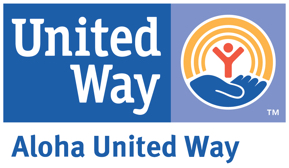
Jul. 22, 2021
A grand experiment to lift many families out of poverty has begun — and everyone has a stake in breaking the cycle of indigence, especially in high-cost-of-living Hawaii.
Last week, families with children under age 18 starting getting checks, thanks to the new advance Child Tax Credit program. These monthly checks of up to $300 per child will continue through year’s end — and, according to a Center of Budget and Policy Priorities analysis, could raise some 43,000 Hawaii children above or closer to the poverty line.
Part of the American Rescue Plan Act signed by President Joe Biden, the payments are intended to lift as many children out of poverty as possible, while also helping to reactivate the economy with boons in consumer spending.
The monthly checks comprise half of the total credit amount; the other half will be claimed when households file their 2021 income tax returns. In total, these payments from the IRS would give nearly all Hawaii families with underage keiki $3,000 to $3,600 per child — about 278,000, or 92%, of the state’s children. A couple making up to $150,000 would get the full credit, as would single parents earning up to $112,500.
Still, advocacy groups here and nationwide are rightly concerned that the poorest families — those in greatest need of financial help — will miss out on the payments. That’s because the monthly checks are largely going out automatically to households based on IRS tax filings — but very poor families that didn’t make enough to file tax returns for 2019 or 2020 aren’t in the system. They do qualify for the enhanced child-tax benefit, of course, but it will take robust outreach with social service providers and homeless shelters to sign them up via the IRS website portal (see 808ne.ws/3BsripL).
Much is riding on how successful this child tax-credit program will be; on whether it can start a monumental, positive shift to reduce U.S. poverty. Tracking of poverty rates and progress much be transparent and accurate throughout — especially if congressional Democrats aim to extend the program past Year One, as is being eyed; or even permanently, as some hope.
At this juncture, however, more details must be forthcoming from Congress and the Biden administration on how this program will be paid for. Tax experts estimate the full-year cost of the expanded child tax credit to be $100 billion, and if made permanent, $1.6 trillion over 10 years.
Offsetting such daunting outset costs, though, would be the transformative potential to reduce poverty and its related subsidies — and especially for children, to break the cycles of indigence and homelessness.
Studies show that without outside intervention, chronically homeless families do not have access to economic, educational and social resources to rise above their circumstances. Instability as a homeless or struggling youth can, unfortunately, more easily extend into adulthood.
Nationwide, nearly 30 million children in low-income households are eligible for the enhanced tax credit of $3,000 or $3,600 (depending on age). The hope is that 4 million children will be lifted out of poverty, which would cut the child poverty rate by more than 40%.
In Hawaii, the Aloha United Way’s 2020 ALICE (Asset Limited, Income Constrained, Employed) Report estimated that 42% of the state’s 455,138 households are struggling to make ends meet. And that dire reality could get darker: The report ominously predicted that another 35,000-plus households, or 105,000 people, would end up struggling by the end of 2020 due to pandemic fallout.
Today’s increased federal child tax credit, then, infusing up to $300 monthly per child into household incomes this year, could float many boats, if applied well and wisely. It is in Hawaii’s best interest, particularly for too many keiki now living below the poverty line, to optimize this opportunity into becoming the socio-economic bootstrap it’s meant to be.
